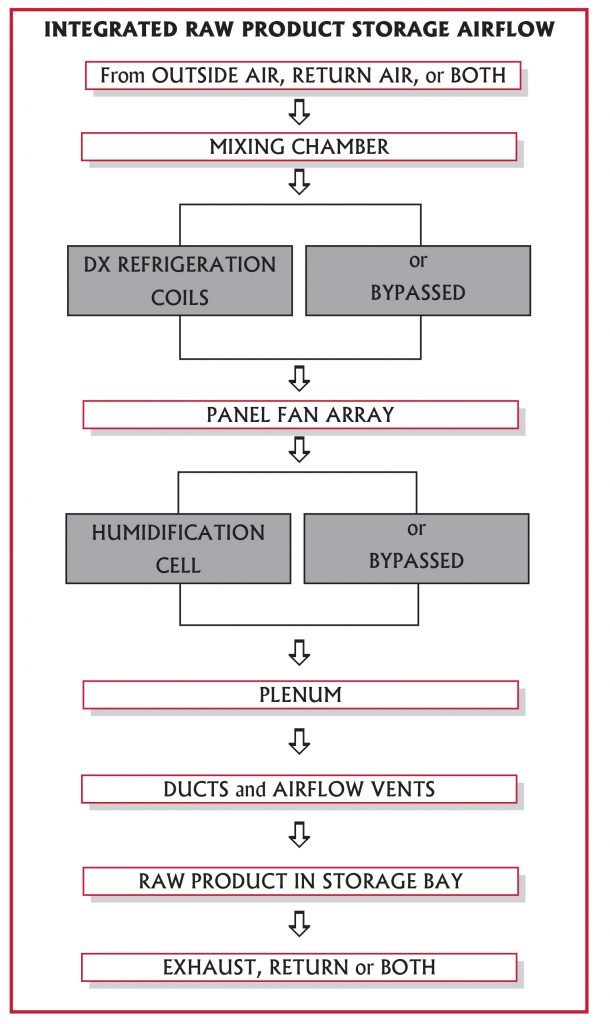By Bob Hesse, Director of Suberizer Research and Development
Appropriate airflow to the product in storage is regarded as the lifeblood of successful storage performance. Several storage elements directly impact airflow pressure losses, and thereby reduce operating costs, including engineering, fanhouse arrangement, system details, storage arrangement, storage details and air distribution to the product in the storage bay.
Raw product storage involves the constant quest to minimize potato losses and maintain product quality during storage. Therefore, the task is to uniformly distribute the desired airflow to the product in the storage bay by minimizing airflow pressure drops along the way.
An integrated approach involves engineering every aspect of airflow to minimize pressure drops. Benefits begin with air entering the fanhouse mixing chamber.
Consider the airflow diagram. The total desired airflow will be limited by any aspect in the airflow diagram that is not optimized. For example, an external fanhouse can minimize changes in the airflow path to minimize turbulence and losses and, consequently, increase airflow to the product in storage.
An integrated approach to storage design significantly reduces pressure losses and resistance to airflow and assures that the desired airflow actually reaches the product in storage.
Without an external fanhouse, it’s not possible to minimize losses, and provide clean, direct, low-velocity airflow to a well-designed plenum. Fanhouse-to-plenum design is another integrated approach detail, which minimizes velocity pressure losses to air entering ducts.
The result is a “puffed-up” plenum with ducts that provide well-designed, extremely uniform airflow to the product in storage via uniformly spaced air floor vents. It’s all about airflow.

